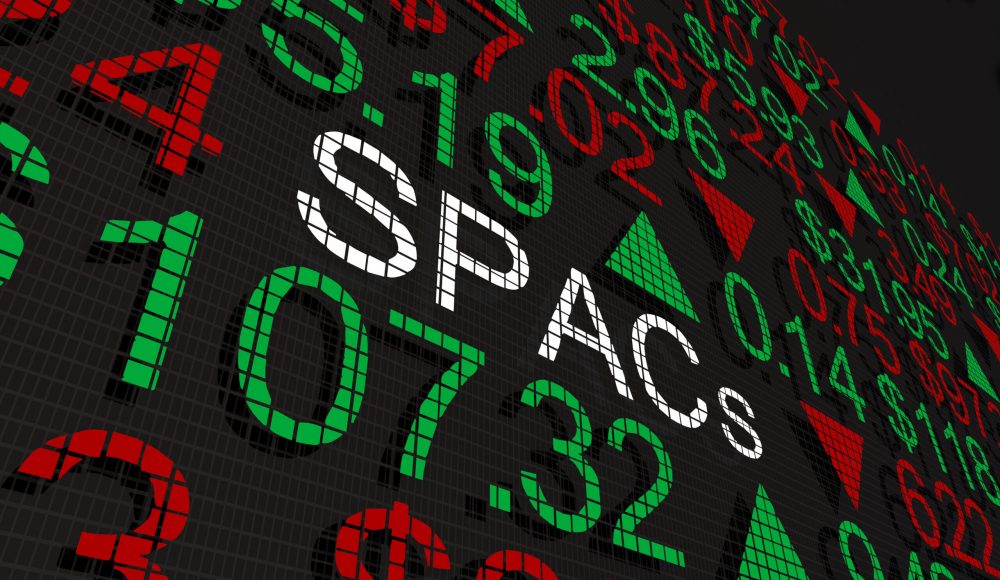
AIDEN CURRAN – NOVEMBER 1ST, 2022
EDITOR: LORENE LI
If you were unfortunate enough to be a regular consumer of business-related news throughout 2021, you may have noticed a common keyword that sounded a little like something you’d find on the bottom of your shoe after a long walk, or something you fill walls with. Homey imagery aside, SPACs as a financial instrument follow the kind of meteoric, short-lived success story that seems so common in the news today, financial or not. In 2020, SPACs accounted for over half of all newly-created public companies in the US. Now? Only 77 SPAC deals occurred in the first half of 2021, as opposed to over double that in the same period last year. Here one minute and gone the next, ‘special-purpose acquisition companies’ nevertheless left their mark on a landscape already dominated by meme stocks, celebrity endorsements and its fair share of scams. As such, the study of SPACs is in many ways a perspective on the market conditions that low interest rates, cheap money and the proliferation of retail trading have created, and the risky behavior that a high-volatility, low-oversight environment where the court of public opinion often proves more powerful than the hand of the regulator.
Background & History
As mentioned, SPACs are companies created for the sole purpose of acquisition: they are public corporate entities with (usually) no assets, physical headquarters or operation of commerce whatsoever: they exist for the sole purpose of raising funds from investors to acquire or merge with a private company, taking it public in the process. This can be done for a variety of reasons, including the speed advantage over an IPO (both because the acquisition process is faster than an IPO and because investors can park money in a SPAC before a target for a merger is even announced), the opaqueness of valuation for a private company as opposed to a public one, and the regulatory flexibility of operating a relatively new financial instrument. This covers roughly why one would want to start a SPAC in the first place – but for investors? It isn’t all roses, but despite their volatility SPACs can be an attractive investment vehicle. In 2021, SPACs actually outperformed the S&P 500 by a significant margin (47% vs 20% price change since the start of the year). Despite their small size and typically subdued mode of operation, SPACs are usually owned and controlled by people with significant financial experience who know how to canvas investors and deploy capital, making them more stable than they might appear at first glance. Other upsides of SPACs include allowing investor exposure to attractive vehicles that may otherwise not be open to investment (i.e unicorns), and stimulating growth in the ‘disruptive’ industries that often create unicorn firms in the first place: biotech, software engineering – cutting-edge tech is at least one externality of investment in firms like these, and SPACs are a decent way of getting them that money, and rewarding investors who choose to value those aspects.
While the shareholders of a SPAC do vote on whether or not to move forward with an acquisition, it is fairly common for shareholders in a SPAC to drop out when the acquisition targets are announced for a variety of reasons: buyers’ remorse, share price dropping on the news, or plain disagreement with company leadership. Harvard Business School found that only 58% of SPAC shareholders chose to stay with the business after the target was announced: in about a third of cases, 90% of investors pulled out. These grim figures bely that SPACs, unsurprisingly, can fail – sometimes spectacularly and, as with so many Wall Street blowups, with great impact on wider business legislature. The purchase of MultiPlan, a healthcare-focused data analytics company by a SPAC collapsed due to accusations that SPAC insiders knew about a massive competitive threat to MultiPlan’s business model which they did not disclose to investors – that one of their major clients intended to create an in-house solution which would remove the need for MultiPlan. Ink was spilled and weighty accusations were made. As one party put it: “Churchill bought a husk of a company from private equity for a ridiculous valuation all so that it could get paid its usurious promote.” SPACs are beginning not to look so different from any of the myriad other meme stocks and boondoggles that regularly feature on financial broadsheets – which is unsurprising! Even with their startling rise and having been touted as the next big thing in finance, SPACs bear a startling resemblance to the much-maligned ‘blank cheque’ companies of the nineties, perhaps providing a hint towards the reasons for their resurgence and their future.
A demon once banished, blank cheque corporations essentially did – precisely what SPACs do now, only with less regulatory oversight. They were plagued by frauds and ‘rug-pulls,’ costing investors about $2 billion a year by the 1990s. They were eventually regulated against, and enjoyed a period of relative obscurity where they were primarily used in extended government shutdowns when IPOs could not happen due to the federal government not operating. Their resurgence can probably be attributed to the same factors that caused the other big-ticket financial stories of 2021: rock-bottom interest rates, cheap money, and a global pandemic creating a legion of new retail investors. Most everyone has heard this story before, but SPACs have disappeared faster than any of these. What gives? Partly, it is the same old hand at work – that of the federal government, who enhanced the stringency of disclosure and investor quality checks for SPACs in March of this year. Partly it is wider macroeconomic conditions – as rate rises close in and the leash tightens on venture capital, highly speculative vehicles like companies that don’t produce or do anything become a harder sell, as did the habit of SPACs dodging the requirement to provide the financial projections that IPOs usually require when taking their target companies public. And partly it is the tidal wave of lawsuits levied at SPAC directors for allegedly breaching fiduciary duty. MultiPlan is just the tip of a rather large iceberg of shaky deals, wild accusations and business intrigue, all of which threatened SPAC stability and contributed to their precipitous decline in 2022.
Today: Celebrities, Regulators, and Money
Besides a few regulatory quirks to get around some oversight, the biggest innovation pioneered by the new generation of blank cheque companies – if one could call it that – is recruiting celebrities to either endorse or be party to investing in SPACs themselves, acting as lightning rods for investor attention. Serena Williams, A-Rod, Jay-Z and many others took part, and SPACs were, for much of 2021, a veritable financial Met Gala. This is unusual for any financial instrument, and like so many other things about SPACs, it didn’t last. Celebrity SPACs underperformed badly, averaging an 11% drop in share price from the start to the end of 2021. They quietly petered out, and their inclusion in the overall SPAC saga felt a little like the celebrities who signed onto the SPAC must have. A footnote in the annals of the wider arc of get-rich-quick financial schemes run by the same perpetrators, joining the heap that crypto must surely sit on the peak of. One feels tempted to convincingly close the book on a stubborn offshoot of history, a ghost of the nineties reborn. Yet while celebrity SPACs are mostly gone, there is one stubborn offshoot still doing the rounds in the headlines today, one perhaps more emblematic of the whole industry than any other company possibly could be.
‘Digital World Acquisition Corp.’, or DWAC, is about as faceless and indistinct a name as one could have for a corporation – one can close their eyes and envision it tucked away on a highrise nameplate somewhere in Middle America. Hardly fitting for the pet project of one of the most famous men in America. Ex-president Donald Trump is inextricably tied to DWAC, being its stated target. DWAC plans to take the Trump Media and Technology Group (TMTG), the conglomerate responsible for Truth Social and other Trump-associated brands, public…eventually. For now, they are embroiled in a characteristic smorgasbord of failures to pay key partners and delays to actually acquiring TMTG and taking public its stated mission of “cancelling cancel culture.” The politics of Trump and his controversial branded Twitter clone aside, this particular case of a SPAC is like a tailor-built example of the issues many in the finance community have with SPACs overall. More than that, it is a near-perfect encapsulation of their place at the crest of a populist wave that has washed over much of America’s financial systems. The GME affair is another crystal-clear example of a kind of financial populism that encourages retail investors to take their power into their own hands, bringing with them their biases, opinions and ideologies. This has rankled some existing financial heavyweights, which new retail investors and smaller firms view as elitist gatekeeping. The resulting breakdown of trust in the financial system to allocate capital deservingly has led to the rise in more individually-accessible, widespread democratizations of finance enabled by companies like RobinHood and the various SPACs. Though not a purely reactionary move, it’s easy to see how populism has become as deeply-rooted in the American financial consciousness as its political one.
Overall, viewing the SPAC craze and subsequent downfall as an isolated curiosity is a tempting, yet incorrect analysis which ignores the systemic conditions that have led to proliferation and investment in such a unique, risky venture. For the most part, it’s prudent to view SPACs as the latest in manifestations of a systemic wave of growing mistrust in the financial system which has left many Americans scrambling to claim the ‘next big thing’ in investing, without much heed to what was once common financial sense.
Featured Image Source: Insurance Journal
Disclaimer: The views published in this journal are those of the individual authors or speakers and do not necessarily reflect the position or policy of Berkeley Economic Review staff, the Undergraduate Economics Association, the UC Berkeley Economics Department and faculty, or the University of California, Berkeley in general.



